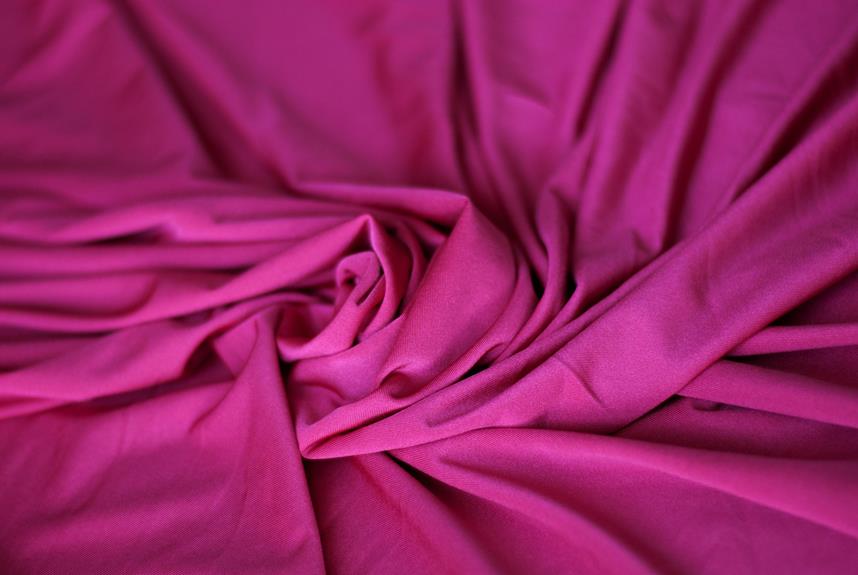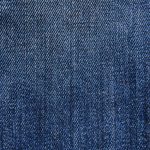When you're considering using stonewash on various fabrics, it's crucial to understand how each type responds to the process. You'll find that denim often requires different techniques than cotton, linen, or synthetic materials. For instance, knowing how to adjust wash cycles and stone ratios can make a significant difference. But what about the nuances that can take your stonewashing technique from basic to exceptional? Exploring these details can help you achieve the desired texture and finish, ensuring your fabrics look their best. Let's examine some specific strategies for each fabric type.
Table of Contents
Key Takeaways
- Choose pumice stones for denim to achieve a lighter, vintage effect while preventing excessive wear during short wash cycles.
- Pre-wash cotton to remove finishes, using a 1:1 fabric-to-stone ratio with warm water for optimal stonewashing results.
- Ensure linen is thoroughly dried before stonewashing, and avoid fabric softeners to prevent residue interference.
- Test synthetic fabrics on a small scale before full stonewashing, as durability and colorfastness are crucial for effective results.
Understanding Stonewashing Basics
Stonewashing is a popular technique that gives fabrics a worn, vintage look by using abrasive materials, typically stones, during the washing process. This method not only enhances the visual appeal of textiles but also softens the fabric, making it more comfortable to wear.
When you're considering stonewashing, it's essential to understand how it interacts with different fabric types. Cotton, for example, responds exceptionally well to stonewashing, resulting in a soft texture and faded appearance. However, synthetic fibers may not achieve the same effect, as they can be less porous and resistant to abrasion.
You'll want to choose the right type of stones—river stones or pumice are commonly used—to achieve the desired look without damaging the fabric. Timing is crucial, too. The washing cycle should be closely monitored to prevent over-abrasion, which can lead to excessive wear and tear.
Experimenting with different washing durations can help you find the perfect balance for each fabric type. By understanding these basics, you'll be better equipped to achieve stunning results in your stonewashing projects.
Stonewashing Denim Effectively
To achieve that coveted vintage look on denim, you'll need to carefully select the right stones and monitor the washing process closely. Start by choosing pumice stones, as they're lighter and less abrasive, making them ideal for denim. The size of the stones also matters; smaller stones can create a more subtle effect, while larger ones provide a more pronounced look.
Next, you'll want to adjust the washing cycle. Use a shorter wash time to prevent excessive wear and tear on the fabric. A cycle of 30 to 45 minutes is usually sufficient to obtain that desired faded appearance without compromising the integrity of the denim.
Don't forget to control the water temperature; cold water is often more effective for retaining color while achieving a faded look. You can also add enzymes to enhance the stonewashing effect, but be cautious not to overdo it, as this can weaken the fabric.
Techniques for Cotton Fabrics
Achieving a stonewashed look on cotton fabrics requires selecting the right stones and adjusting your washing process for optimal results. Start by choosing the appropriate stones; larger, heavier stones create a more aggressive abrasion while smaller stones provide a gentler finish. Consider your desired level of distressing when making your selection.
Next, prepare your cotton fabric by pre-washing it to remove any finishes or coatings that could interfere with the stonewashing process. Once your fabric is ready, load it into the washing machine with your chosen stones. The ratio of fabric to stones is crucial; a good rule of thumb is to use about 1:1.
Set your washing machine to a gentle cycle with a warm water temperature. Monitor the process closely, as too much abrasion can damage the fabric. Aim for a wash time of around 30-40 minutes, then rinse thoroughly to remove any stone residue.
After rinsing, dry the fabric on a low heat setting to avoid shrinking.
Applying Stonewash to Linen
When you're ready to apply stonewash to linen, start by prepping the fabric properly to ensure even results.
You'll want to focus on achieving the desired texture, which can really enhance the natural qualities of linen.
Let's explore the steps you need to take for successful application.
Prepping Linen Fabric
Prepping linen fabric for stonewashing involves washing it to remove any finishes and ensuring it's clean and ready to absorb the dye. Start by checking the fabric's label for care instructions. You want to avoid any surprises that could damage your beautiful linen.
Once you confirm it's machine washable, throw it in the washer with a mild detergent. Skip the fabric softeners, as they can leave residues that interfere with the stonewashing process.
After washing, dry the linen either in a dryer on low heat or by air drying. This step is crucial; don't skip it! If you want your stonewashed linen to have that soft, lived-in look, you need to prepare it properly.
Here are some emotional benefits to prepping your linen fabric correctly:
- Excitement: Feel the thrill as your fabric transforms!
- Satisfaction: Enjoy the pride of a job well done.
- Anticipation: Look forward to the stunning results you'll achieve.
With the right prep, you're one step closer to achieving that perfect stonewashed finish.
Achieving Desired Texture
To create the perfect texture for your stonewashed linen, start by selecting the right stonewashing method that suits your desired finish. You can choose between traditional stonewashing, which involves washing the fabric with stones, or utilizing modern alternatives like enzyme washing. Each method offers a unique texture, so consider how soft or rugged you want the final product to feel.
Once you've chosen a method, prepare your linen by ensuring it's clean and free of any finishes that could hinder the stonewashing process. If you want a more pronounced texture, increase the amount of time you wash the fabric. However, keep an eye on it to avoid over-distressing.
After washing, rinse the linen thoroughly to remove any loose particles or residues. You might want to dry the fabric in a tumble dryer with dryer balls to enhance the softness further. If you prefer a more muted look, air drying is a great option.
Preparing Synthetic Materials
When working with synthetic materials, you need to consider their compatibility with stonewash techniques.
It's crucial to understand the right pre-treatment methods to ensure the fabric holds up during the process.
Fabric Compatibility Considerations
Choosing the right synthetic materials is crucial for achieving the desired stonewash effect without damaging the fabric. Not all synthetics are created equal, and some may react poorly to the stonewashing process. To ensure success, consider the following tips when selecting synthetic fabrics:
- Look for durability: Choose materials known for their strength, like polyester blends, to withstand the stonewashing process.
- Check for colorfastness: Make sure the fabric can hold its color under the intense conditions of stonewashing; you don't want unexpected fading.
- Avoid delicate fabrics: Steer clear of lightweight or sheer synthetics, as they can easily tear or lose shape during washing.
Pre-treatment Techniques Explained
Preparing synthetic materials for stonewashing often requires specific pre-treatment techniques to ensure optimal results and durability.
Start by checking the fabric composition; many synthetics, like polyester and nylon, can withstand harsh treatments but may need tailored approaches.
Begin with a thorough wash to remove any finishes or coatings that might interfere with the stonewash process. Use a mild detergent and avoid fabric softeners, as they can create a barrier against the stonewash.
Next, consider using a heat treatment. Exposing the material to heat before stonewashing can enhance the fabric's ability to absorb the wash effects. You can do this by placing the fabric in a dryer on a low setting for a short period.
After that, it's crucial to test the fabric's colorfastness. Apply a small amount of stonewash to a hidden area and check for any adverse reactions. If the fabric holds up well, you can proceed with your stonewashing process.
Care Tips for Stonewashed Fabrics
Caring for stonewashed fabrics is essential to maintain their unique look and softness. You'll want to take a few simple steps to ensure they remain vibrant and comfortable.
First, always wash your stonewashed items in cold water. This helps preserve the color and prevents any unnecessary fading.
Next, avoid using harsh detergents or bleach, as these can strip away the soft texture you love. Instead, opt for gentle, color-safe detergents that protect the fabric's integrity.
When it comes to drying, air-drying is your best friend. It keeps the fabric from shrinking and maintains that cozy feel. If you must use a dryer, select a low heat setting.
Finally, store your stonewashed fabrics properly. Make sure they're folded neatly in a cool, dry space.
Feel the softness of your favorite stonewashed shirt against your skin.
Embrace the unique character of every garment you own.
Relish the nostalgic vibe that stonewashed fabrics bring.
Enjoy the comfort that makes you feel at home, wherever you are.
Following these tips will keep your stonewashed treasures looking and feeling amazing for years to come!
Frequently Asked Questions
Can Stonewashing Be Done at Home Without Professional Equipment?
Yes, you can stonewash at home without professional equipment. Just use rocks or pumice stones in a washing machine with detergent. Keep an eye on the process to achieve your desired look without damaging your fabric.
What Types of Stones Are Best for Stonewashing Fabrics?
For stonewashing fabrics, you'll want to use pumice stones or river rocks. They're effective due to their texture and weight, creating that desired worn look. Just make sure they're clean and free of debris before starting.
How Does Stonewashing Affect Fabric Strength Over Time?
Stonewashing can weaken fabric strength over time, especially with repeated washes. You might notice increased wear and tear, leading to potential fraying or thinning. Regular inspection helps maintain your garments' integrity as they age.
Is Stonewashing Safe for All Types of Dye?
Stonewashing isn't safe for all types of dye. It can cause colors to fade or alter, especially with delicate or synthetic dyes. Always test a small fabric sample before proceeding with the entire piece.
Can Stonewashed Fabrics Be Repaired or Mended Easily?
Yes, you can repair stonewashed fabrics, but it might be tricky. The faded texture can complicate matching repairs. However, with the right techniques and materials, you can often achieve a seamless mend.
- What Is Pochampally Ikat? a Journey to India’s Silk City - June 27, 2025
- What Is Pochampally Ikat? a Journey to India’s Silk City - June 27, 2025
- What Is Pochampally Ikat? a Journey to India’s Silk City - June 27, 2025







